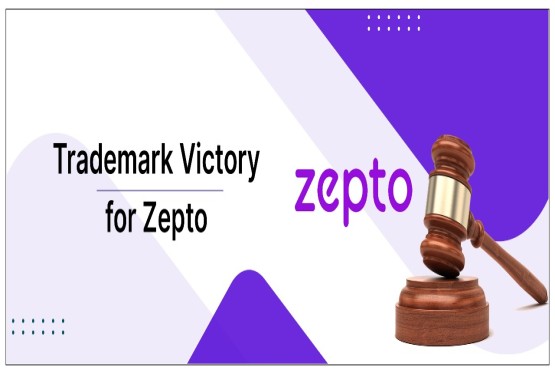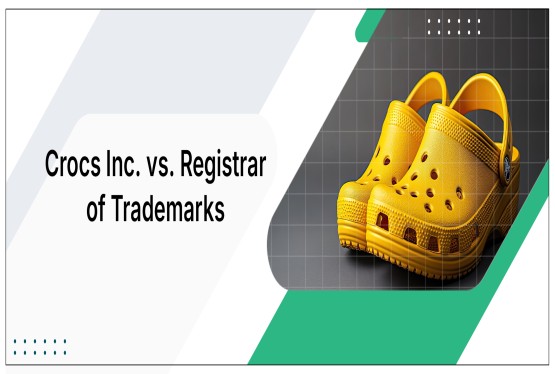Summary
A rectification petition is filed under Section 57 of the Trademarks Act, 1999 to remove a mark from the Register in case there is an error in registering the same or on grounds of contravention or failure to observe a condition of the trademark already entered in the Register.
This case deals with filing a rectification petition for non-usage of a trademark under Section 47 of the Trademarks, 1999. The judgment analyses the meaning of ‘aggrieved person’ and the requisite conditions to qualify as the same under the section. It further deals with the period to calculate ‘non-usage’ and decide on the question of maintainability of the subsequent rectification petition filed for the same application.
Facts of the Case
-
Petitioner: Kaleesuwari Refinery Pvt. Ltd
-
Respondent: Rathinasamy Gomathy & Anr
-
The first respondent got a device mark registered on 05.09.2003 with a prior user claim from 01.06.1999.
-
The application was filed under Class 30 about toor dal, dal varieties, and other goods.
-
The petitioner filed a rectification petition in 2006 alleging that the words “GOLD WINNER” forming part of the device mark of the first respondent have been used by the petitioner for edible oil since 1999.
-
The said rectification petition was withdrawn in 2013 by the petitioner as they found no iota of evidence of usage of the said device mark by the respondent during that time.
-
The present rectification petition dealt with in this case was filed in January 2018 before the Intellectual Property Appellate Board (IPAB), which, after the abolition of the board got transferred before the High Court of Madras.
Issues Raised
-
Whether the petitioner qualifies as an ‘aggrieved person’ under Section 47 of the Trademarks Act, 1999 by the applicant.
-
Whether the rectification petition is maintainable?
Submissions of the Counsels
1. Submissions on Behalf of the Petitioner
-
The rectification petition was filed owing to the deceptively similar element, ‘GOLD WINNER’ used by the first respondent in its device mark.
-
The said petition was withdrawn in the year 2006 owing to non-usage of the impugned mark during that time.
-
In the year 2017, it was the first respondent who filed a suit against the present petitioner for allegedly passing off the goods of the respondent as his own by using a deceptively similar trademark. In this regard, the court submitted that the element ‘GOLD WINNER’ is not an essential element of the trademark of the first respondent.
-
The petitioner contended that the present petition is maintainable under Section 47 of the Trademarks Act, 1999 even after withdrawal, provided the petitioner proves non-use of the alleged mark and that such non-use falls within the ambit of Section 47.
-
The counsel referred to the judgment of ‘Haw Par Bros. International Ltd Vs. Tiger Balm Co. (P) Ltd & Others to discuss the distinction between goodwill and reputation. Goodwill extends to a smaller class of customers concerning a specific goods/service while reputation extends beyond the specific class of goods. Owing to the large expenditure towards advertising, the petitioner has gained a reputation and has the right to file this rectification petition.
2. Submissions on Behalf of Respondent
-
It was pointed out that the first rectification petition filed both under Sections 47 and 57 of the 1999 Act, was withdrawn by the petitioner in the year 2013 without obtaining leave to re-apply.
-
Further, it was submitted that the present rectification petition is not maintainable as it is also filed under the same provisions of law i.e., Sections 47 and 57 of the 1999 Act.
-
Referring to the case of ‘Patel Field Marshal Agencies Vs. P.M. Diesels Limited and Others (Patel Field Marshal)’, it was stated that the petitioner is not subsequently allowed to file rectification if they have failed to challenge the validity of the registration in a civil suit instituted earlier.
-
It was raised by the counsel representing the first respondent that the first petition and the current petition are founded on the same cause of action and having been withdrawn by the petitioner, they cannot be entitled to file the current rectification petition. Hardie Trading Ltd. and another Vs. Addisons Paint & Chemicals Pvt. Ltd
-
Further, it was contended that the petitioners cannot be called ‘aggrieved persons’ under Section 47 of the 1999 Act. Only a person with genuine private interest would qualify as an aggrieved person.
3. Submissions of Petitioner by way of Rejoinder
-
The petitioner submitted that they fulfill all the conditions of being called an ‘aggrieved person’ under Section 47 of the 1999 Act.
-
At the time of filing of the current petition, the first respondent is using the deceptively similar trademark ‘GOLD WINNER’ on a substantially modified label.
Findings and Analysis
- Who will be referred to as an aggrieved person under section 47 of the 1999 act?
-
In the Harding trading case (supra), a petition under Section 57 can be instituted in the public interest as well unlike a petition under Section 47 which can be instituted only by a person who is directly affected by the non-usage of the registered mark.
-
In the present case, the petition was filed under both Sections 47 and 57 of the 1999 Act. Further, both parties carry on similar business and have applied for similar trademarks. Considering all the issues at hand, the petitioner qualifies as an aggrieved person under Section 47 of the 1999 Act.
- Whether the present rectification petition is maintainable?
-
First respondents replied with a counter to the initial rectification petition filed in 2006 wherein it was asserted that both the parties deal with different categories of goods and are registered under different classes as well.
-
About one of the submissions raised by the counsel of the first respondent that a second rectification petition cannot be filed unless leave is obtained to re-apply, the court stated that
-
The court examined whether a fresh cause of action arose under Section 47(1)(a) and Section 47(1)(b) of the 1999 Act.
-
Fresh cause of action under Section 47(1)(a)Petitioner under this section must establish that there was no bona fide intention on the part of the applicant to use the trademark even at the time of registration. Thus, the cause of action being the same in the first and current rectification petition, the same cannot be held maintainable.
- Fresh cause of action under Section 47(1)(b)Petitioner under this section must establish that there was non-usage of the mark for a continuous period of five years ending three months before the filing of the application.
Under this section, the period will be calculated after the date of withdrawal of the first petition. The reason stated by the court is that non-use before the date of withdrawal would form part of the first petition or would have been a valid reason to continue prosecution and not withdraw the same.
The first petition was withdrawn on 30/01/2015 and the said period of five years and three months will end in May 2018. A second rectification petition was filed in January 2018, the same cannot be said to be maintainable.
Thus, the court dismissed the current rectification petition declaring it to be non-maintainable.
Frequently Asked Questions
- Can a trademark be removed from the Register on account of non-usage?
Yes, a trademark can be removed from the Register on account of non-usage for a period of five years and three months from the date on which it was entered in the Register.
- What are the grounds for filing a rectification petition under Section 47 of the Trademarks Act, 1999?
-
Any contravention, or failure to observe a condition entered on the register in relation thereto.
-
If the mark was wrongly remaining on the register in case it is against some legal provisions of the Act or likely to confuse.
-
Making any changes, amendments, or modifications in connection with any registered trademark as per the recent advancement.
-
Non-use of any registered trademark for more than five years by the registered proprietor.
-
Non-renewal of the original or previous registration of the trademark.
-
A trademark could be expunged from the register in case registration is obtained by fraud. Particularly, where the trademark registration has been obtained by suppression of material fact or false statement it is known as registration obtained by fraud.
- Who qualifies as an “aggrieved person” under section 47 of the 1999, Act?
An aggrieved person is directly affected by the non-usage of a registered trademark.
- When can a rectification petition be filed for non-usage?
It can be filed anytime after the set time frame has lapsed. If a petition is filed before, the same would be non-maintainable.






























_(b)_of_the_Trademark_Act,_1999_(1)_crop10_thumb.jpg)



_crop10_thumb.jpg)




























_crop10_thumb.jpg)
_crop10_thumb.jpg)






_crop10_thumb.jpg)








_crop10_thumb.jpg)
_crop10_thumb.jpg)



_crop10_thumb.jpg)





























_crop10_thumb.jpg)

















_crop10_thumb.jpg)






_crop10_thumb.jpg)












































































































































_crop10_thumb.jpg)




































_crop10_thumb.jpg)












_crop10_thumb.jpg)






















